I visited Lichfield Cathedral at the end of June 2025, taking several trains from my home in Bath to get to the small city north of Birmingham. It was a scorching hot day and the shopping centre was busy, but the cathedral was cool and empty, a haven of calm. My kind of happy place!
Lichfield Cathedral is the only medieval cathedral in the United Kingdom to feature three spires, earning it the nickname, ‘the Ladies of the Vale.’ You can easily walk there from the train station.
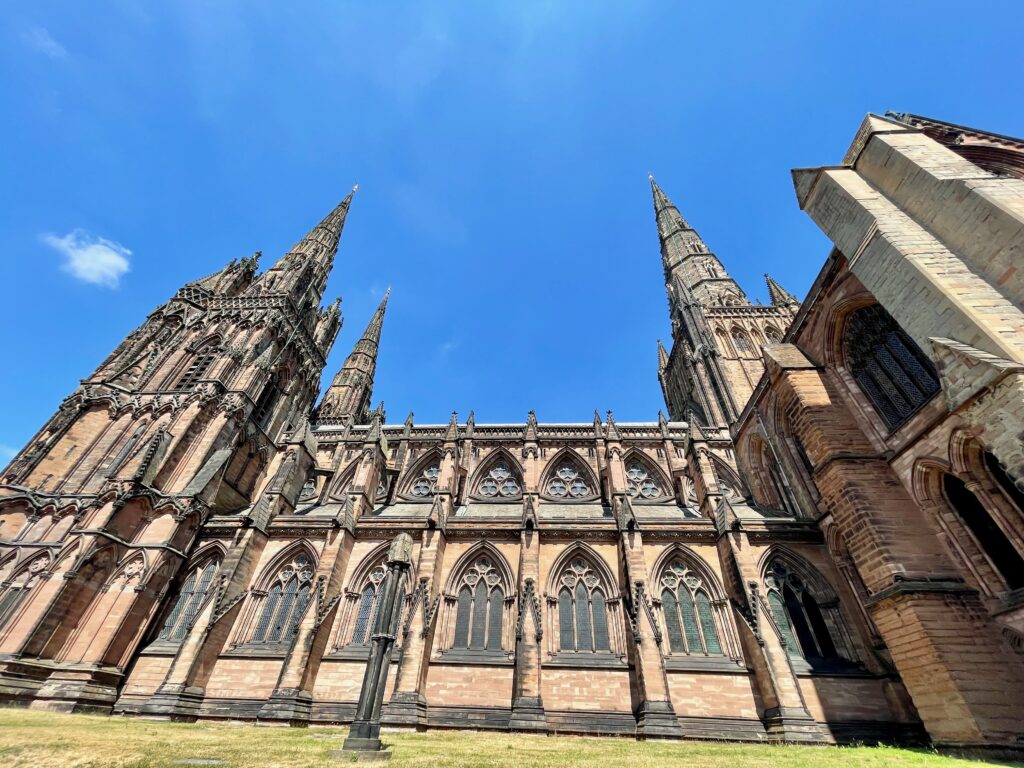
The West Front of the cathedral has over 113 statues of saints, kings, and queens. During the Civil War sieges of 1643-46 the Parliamentarian guns and—and more destructively—Puritan iconoclasts smashed much of the sculpture on Lichfield’s west front. Muskets, pikes and even sword-sharpening all left scars that can still be picked out in a few original heads today. The fabric itself stayed standing, but the figures were so battered that most had to be taken down in the 1700s and were finally replaced in George Gilbert Scott’s Victorian restoration of 1877-84.
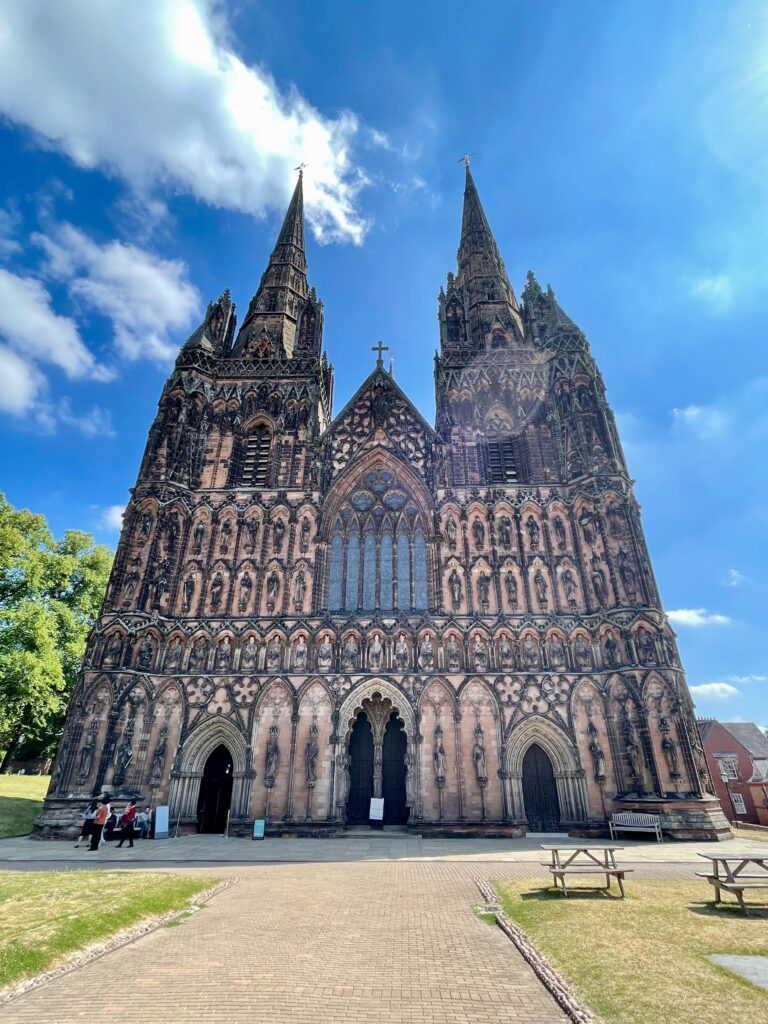
The cathedral features an array of gargoyles and grotesques on its exterior. Gargoyles (from gargouille, “throat”) feature a waterspout. Rain runs from the roof through a channel in the creature’s back and jets out of the open mouth, throwing water clear of the walls. Grotesques (or “chimera”) look similar but are purely decorative with no drain-hole. These are Victorian additions.
I always start my cathedral tours by standing at the back of the church and looking towards the altar and up to the ceiling.
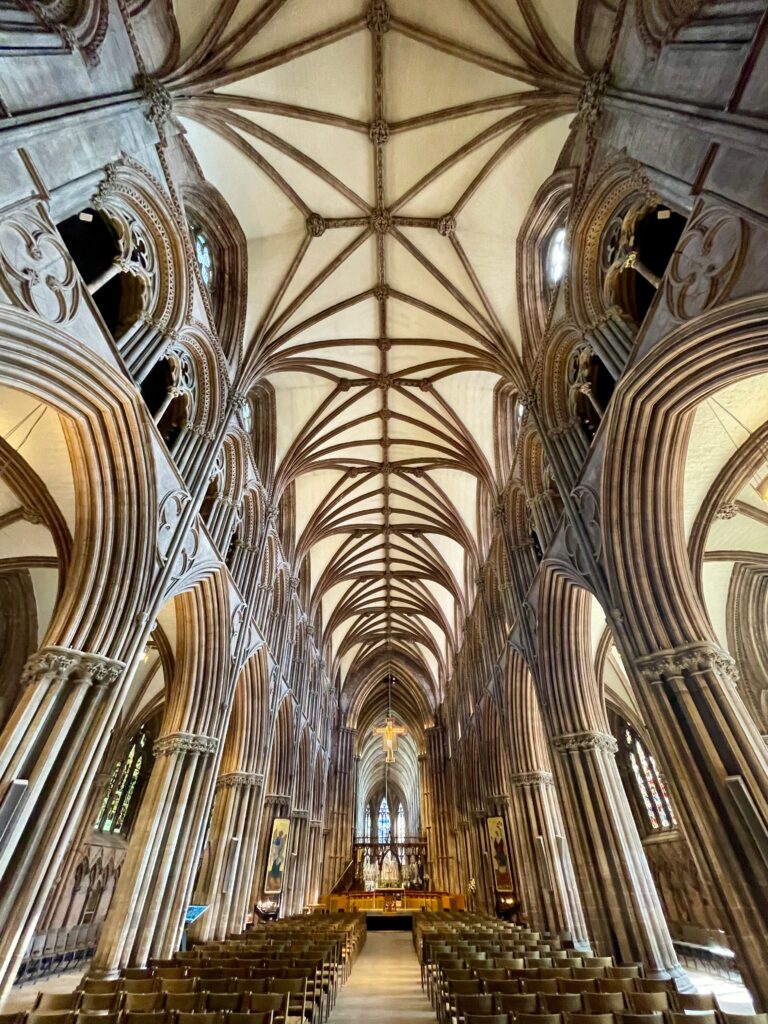
Here’s a closer view of the hanging crucifix, a modern piece of art reminiscent of a Catholic icon. It is titled Christ Crucified, Risen and Lord of All, and is the work of the iconographer Ian Knowles, Principal of the Bethlehem Icon School.
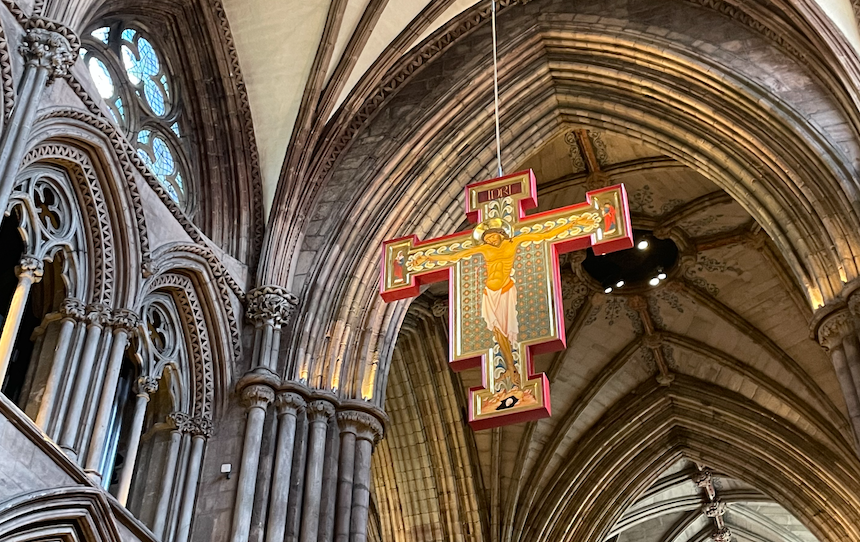
Although Lichfield Cathedral is Church of England, and therefore Protestant, there are other call-backs to Catholicism present. The most obvious — and unusual — is a relic of St. Chad in a shrine behind the main altar.
St Chad was born around 634, educated on Lindisfarne (Holy Island) and appointed Bishop of Mercia, establishing his community in Lichfield.
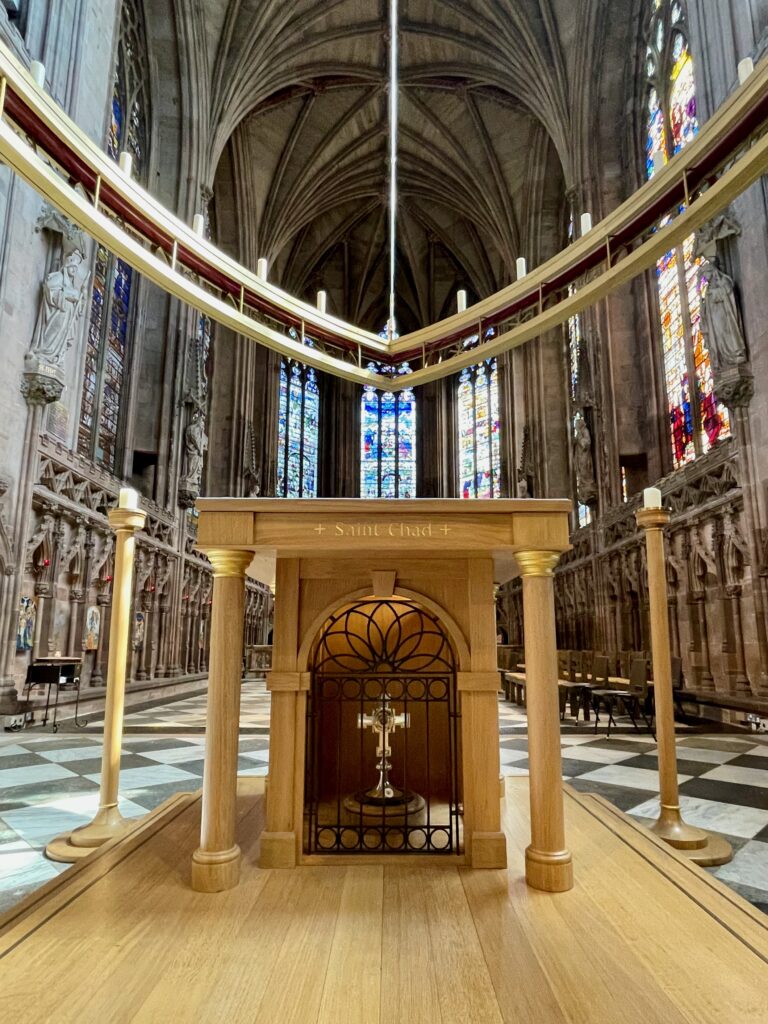
The original medieval shrine and relics were destroyed during the Reformation in 1538, but some bones were rescued and preserved. The main collection is now housed in the Catholic St. Chad’s Cathedral in Birmingham, but a portion was gifted back to Lichfield Cathedral in 2022 as an ecumenical gesture of shared heritage.
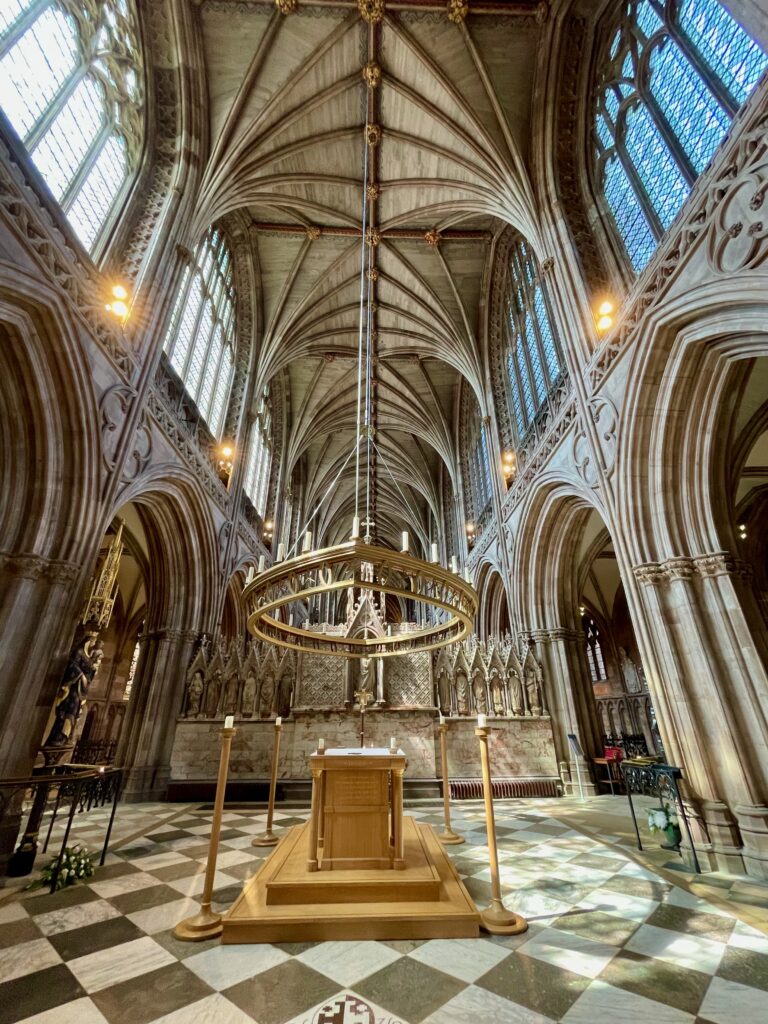
It might seem puzzling why such a small place has such a grand cathedral, but Lichfield once sat at the heart of Mercia, the biggest Anglo-Saxon kingdom.
In 669 the missionary-bishop St Chad moved the Mercian diocesan seat here, giving the town spiritual sway over a territory that stretched from the Welsh Marches to the North Sea. When he died, St Chad’s tomb became one of the three most important centres of medieval pilgrimage in England, rivalled only by Canterbury and Walsingham. Offerings and hospitality trade made the cathedral very wealthy.
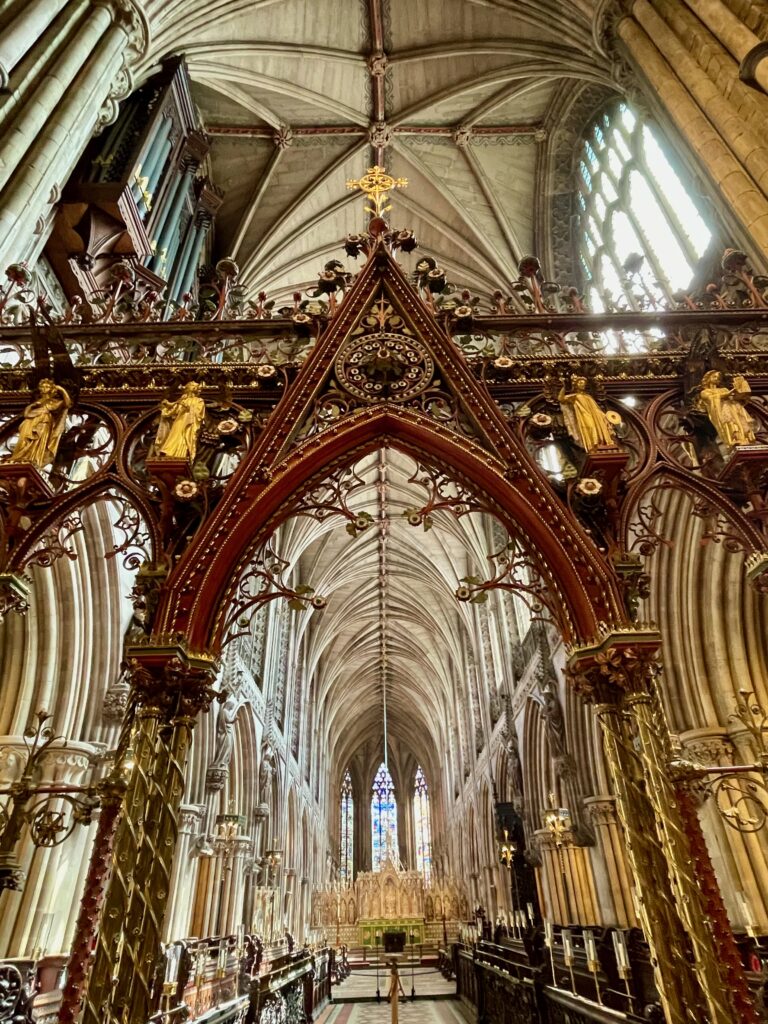
Under the powerful king Offa, Lichfield was even promoted to an archbishopric (787 – 803) so that Mercia need not look to Canterbury, and royal patronage brought land endowments, legal privileges and a steady flow of money.
The cathedral suffered extensive damage during the English Civil War, being besieged three times. The central spire was destroyed, and much of the building was left in ruins. The area surrounding the cathedral, known as the Cathedral Close, was once fortified with walls and a moat, making it a defensive stronghold, particularly during the Civil War.
After the Middle Ages Lichfield never industrialised. 18th-century coaching trade and an illustrious literary circle (Samuel Johnson and Erasmus Darwin amongst others) kept it cultured but small. Nearby Birmingham, Wolverhampton and Stoke made the most of the coal, iron and pottery booms, so modern Lichfield feels modest beside its cathedral.
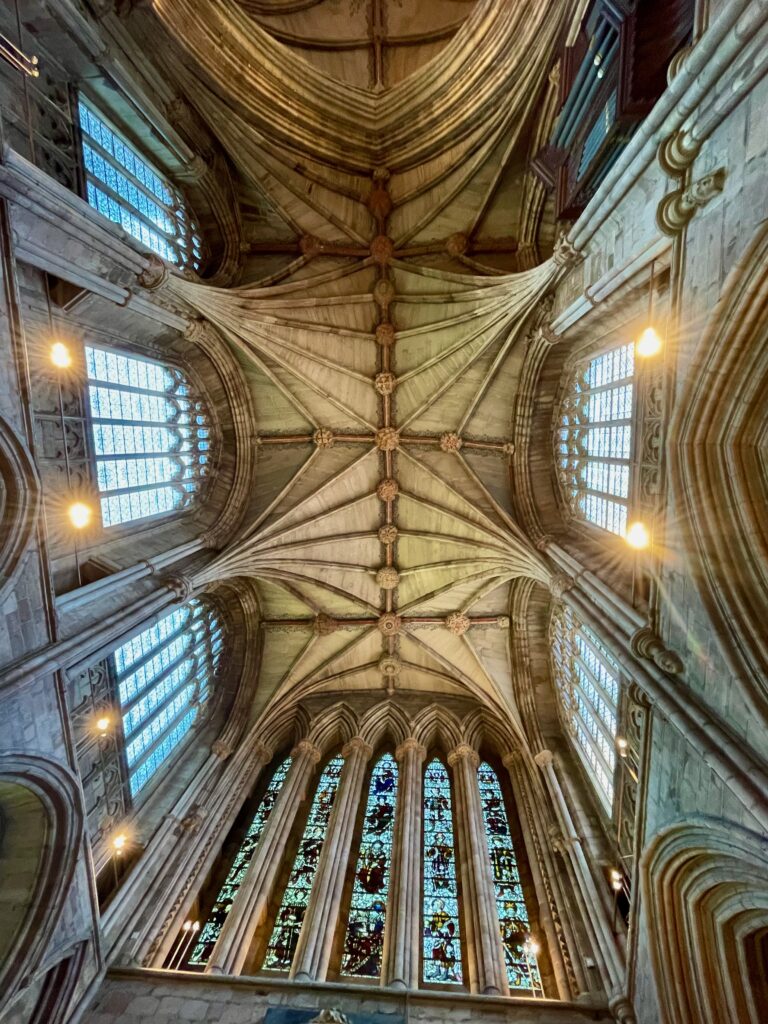
The Lady Chapel was built in the early 1300s in the Decorated-Gothic style, and is jointly dedicated to St Mary and St Chad. I am not usually a fan of stained glass, as I find it overwhelming and prefer stark lines of stone. But the Lady Chapel has some gorgeous 16th-century stained glass from the Abbey of Herkenrode in Belgium.
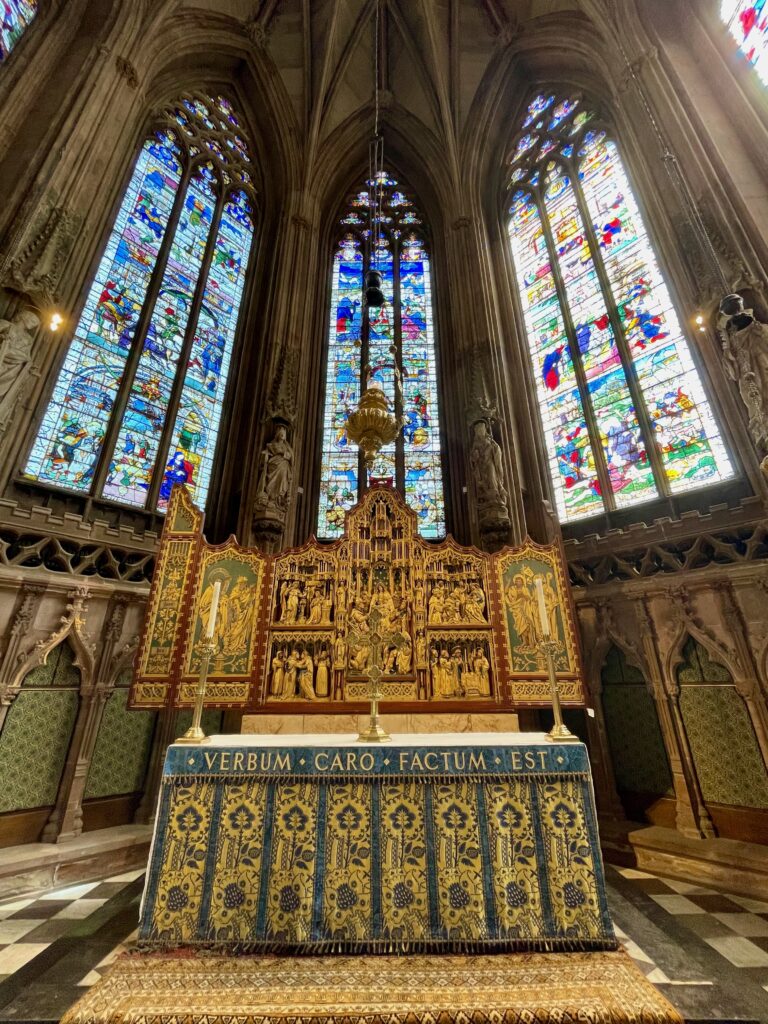
The altar text VERBUM CARO FACTUM EST is Latin for “The Word was made flesh,” John 1:14, a perfect Marian reference for a chapel honouring the Mother of Christ.
The octagonal Chapter House, completed in 1249, features intricate carvings and a vaulted ceiling supported by a single central column.
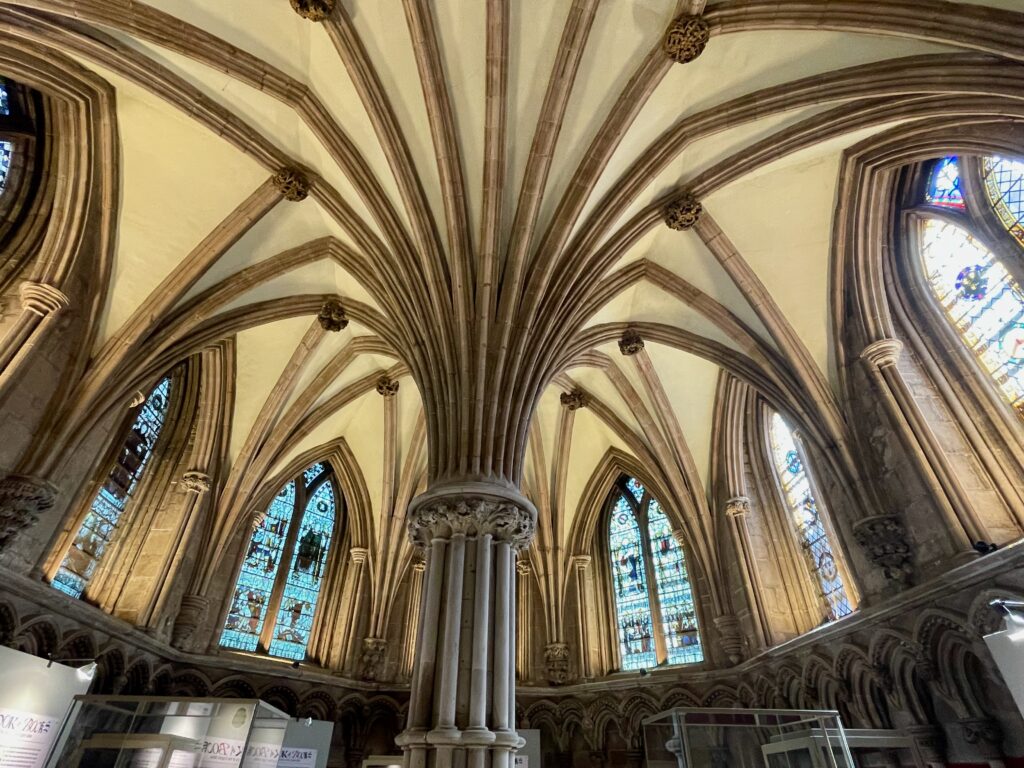
There was a display of Bibles when I visited, including The Lichfield Gospels, also known as the St. Chad Gospels. This manuscript of the gospels of Matthew and Mark, and the beginning of Luke, dates back to around 730 AD, older than the Book of Kells (c. 800 AD) but roughly contemporary with the Lindisfarne Gospels (c. 715-720 AD).

In 2003, a limestone panel depicting the Archangel Gabriel was discovered buried beneath the nave. Dating to around 800 AD, The Lichfield Angel is a rare and significant piece of Anglo-Saxon sculpture. It was on display in the Chapter House when I visited.
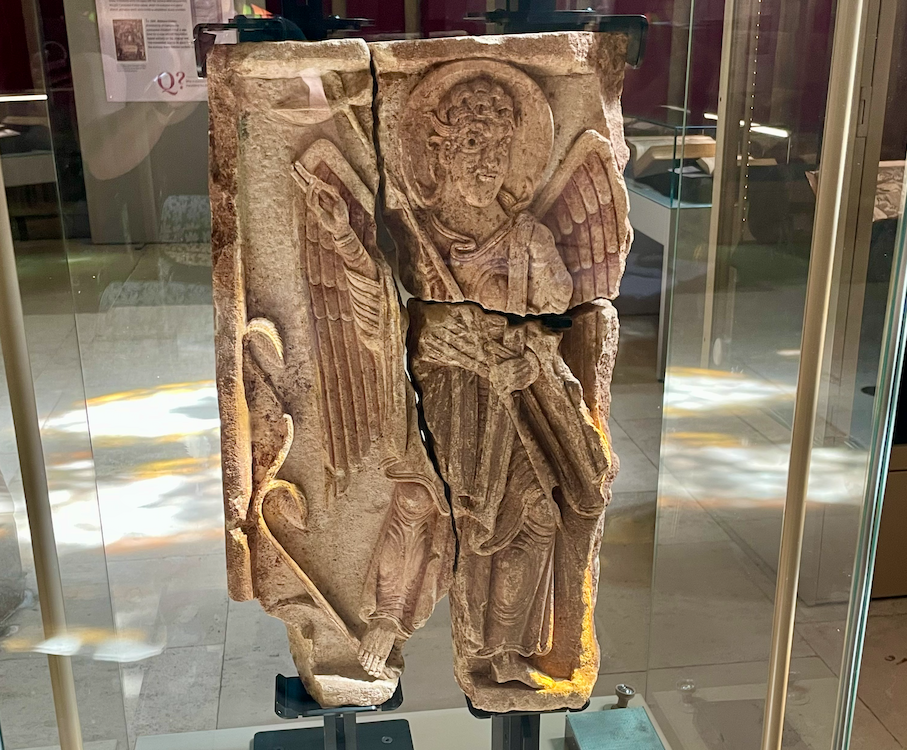
Also currently on display is the spectacular Fenland Black Oak table, a 13-metre-long table crafted from a section of a 5,000-year-old black oak tree discovered in the Fenlands.
The giant oak tree was preserved after falling into a peat bog, where the oxygen-free conditions prevented the normal process of decay by protecting it from bacteria and fungi. Over thousands of years, water rich in minerals and tannins saturated the timber, acting as a natural chemical preservative that hardened the wood and stained it a deep, dark black.

To situate this in time, this tree was a living sapling when the first stones of Stonehenge were being erected. It was already an ancient giant of the forest by the time the Great Pyramid of Giza was completed in Egypt. It predates the Roman Empire by millennia and was growing long before the events of the Old Testament were first written down.
Its age connects us directly to the Stone Age landscape of Britain and I found it incredibly moving to be able to touch it. I love how a sense of being a tiny speck against the vast arc of history makes me feel insignificant in a good way. It gives me perspective and enables me to stop focusing on the minutiae of daily troubles, and reconsider what’s important about life.
Another reminder of memento mori are the hanging flags and standards from old regiments, the ones below featuring the North & South Staffordshire Regiments next to St Michael’s (Regimental) Chapel.
These are consecrated on presentation and once they become too worn or a regiment is re-organised, they are laid up in a sacred or civic place instead of being destroyed. King’s Regulations require that redundant Colours “remain the property of the State” and should normally be lodged in a church, cathedral or regimental museum where the public can see them and where they are allowed to decay with dignity. The slow fading and fraying is a visual reminder of the frailty of life and of those who once fought beneath them.
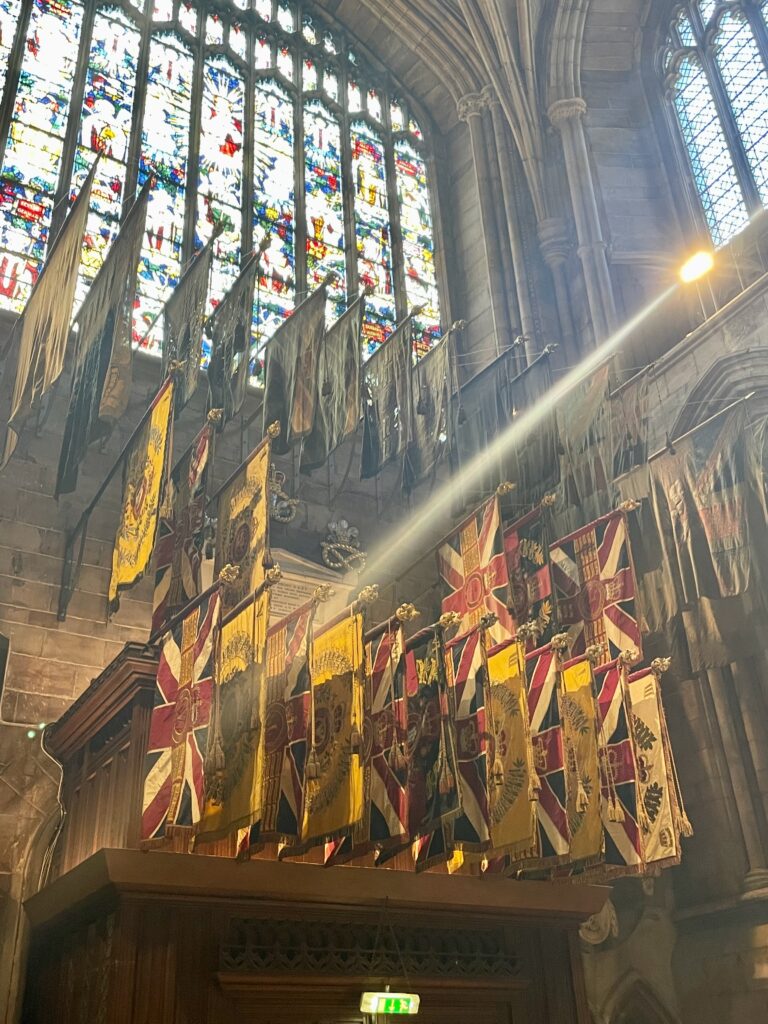
I loved my visit to Lichfield Cathedral, and highly recommend a visit! Find out more at www.lichfield-cathedral.org.


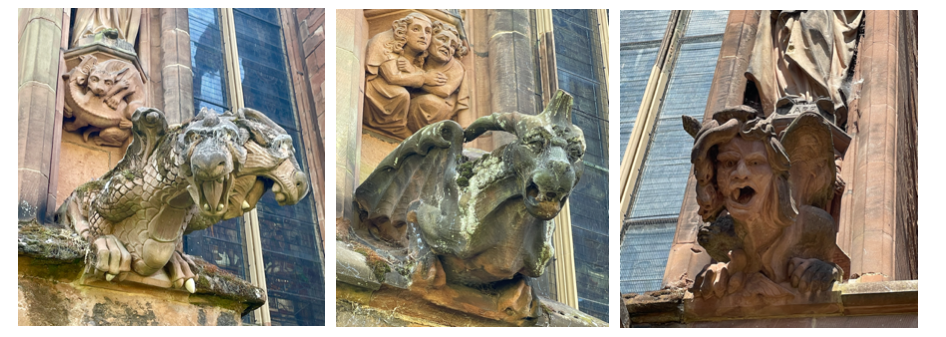
Very interesting information, and I loved the photos. It all makes me want to visit!
Thank you! It was a wonderful day out.
I loved your tour. Thank you.
Thanks, glad you enjoyed it!
The pictures are so lively and vivid. They are as invigorating as they are invoking.
Thanks immensely for letting us know that the world didn’t start yesterday.
Go ahead and create the story so that we can re-live yesterday and make better meaning of today.
Thanks once more.